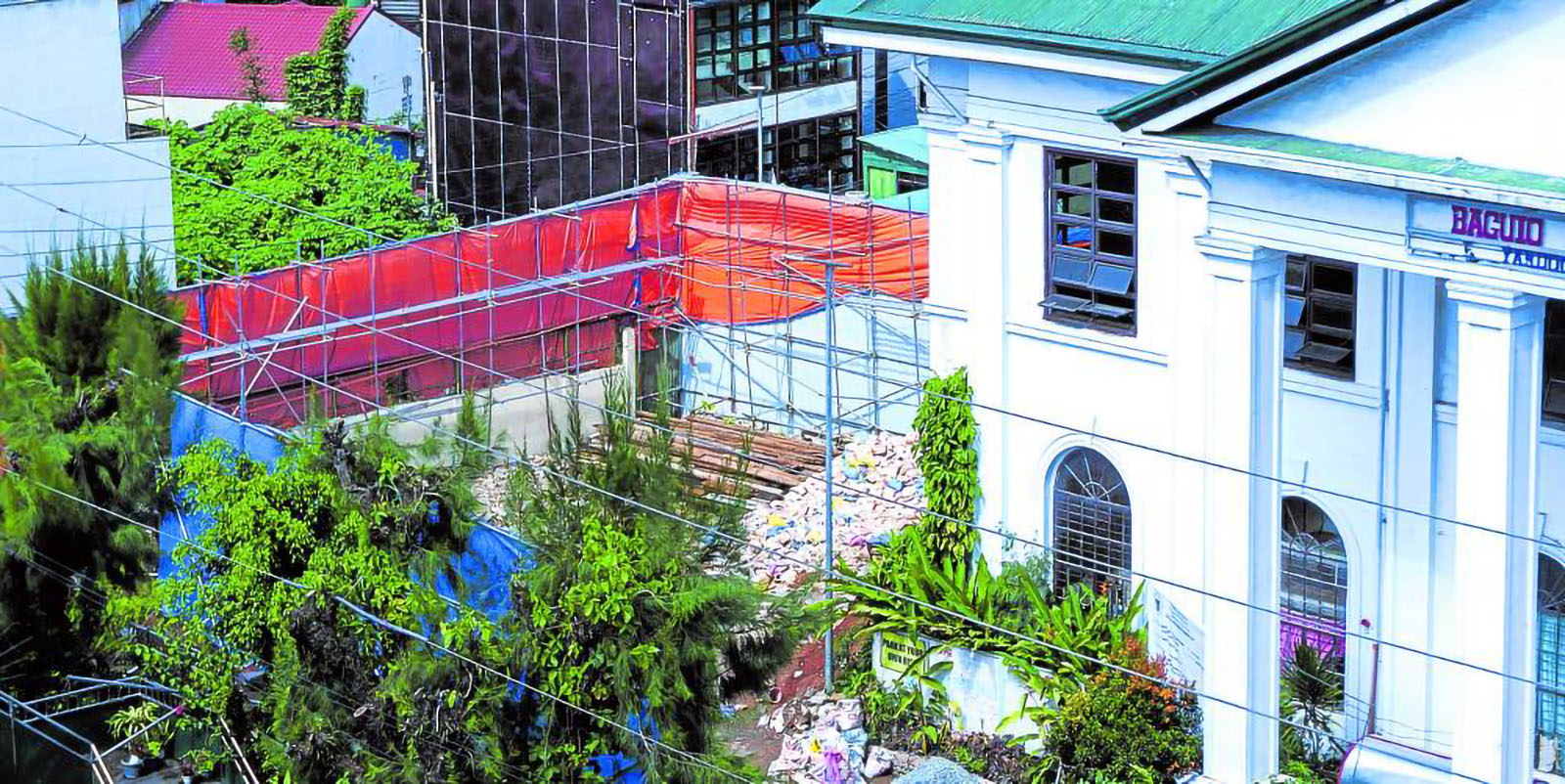
REHAB OF BAGUIO’S OLDEST GRADE SCHOOL HALTED
BAGUIO CITY — This city’s oldest elementary school, which traces its origins to 1899 as an Ibaloy house, is undergoing rehabilitation to preserve its historic Gabaldon building.
The P41.2-million project of the Department of Education (DepEd) intended to repair portions of the Baguio Central School (BCS) that have deteriorated, such as termite-infested floorboards, walls, beams and ceilings which were vulnerable to storms, said Niño Tibangay, chief of school governance and operations of the Baguio schools division office on Monday.
The city’s Cultural Mapping Book classified BCS as a “significant tangible and immovable cultural heritage property,” and described it as “the biggest elementary school in the city, with about 70 classrooms, 3,300 pupils and 83 teaching staff.”
It cited a popular account that the school began in a hut owned by Ibaloy clan leader Mateo Cariño in 1899, shortly before the American colonial government took control of the Philippines.
Clearances
But construction work was recently stopped by the Baguio government following complaints over the demolition of a section of BCS.
“A community outcry broke out when the school’s left wing was suddenly and noticeably demolished, attracting the attention of parents, passersby, and even Baguio City Hall personnel,” said Linda Grace Cariño, a great-granddaughter of Mateo and who helped document BCS for the Cultural Mapping Book.
The demolition also caught the attention of the City Planning, Development and Sustainability Office, which required DepEd to first provide a conservation plan and a work management plan for the school, City Administrator Bonifacio dela Peña told the Inquirer on June 6, noting that the project did not secure clearances like a building permit.
DepEd is tasked with preserving all 2,045 Gabaldon school buildings in the country, as required by the Gabaldon School Buildings Conservation Act of 2019 (Republic Act No. 11194).
Gabaldon school houses were built in the first years of American governance. These are elevated buildings with high ceilings, arched or clam-shaped windows, and porticos with large columns which took its name from Assemblyman Isauro Gabaldon who sponsored Act No. 1801 that allocated funding for public school buildings in 1907.
Since BCS is one of seven Baguio schools with Gabaldon buildings, the school was inspected by the National Commission for Culture and the Arts (NCCA) and the National Historical Commission of the Philippines before work proceeded, Tibangay said.
But during an inspection on May 26 last year, the NCCA architect directed DepEd to restore the Gabaldon structure to its “original state,” which meant removing the “building extensions” that hold 16 classrooms, he said. The Gabaldon building’s left and right wings were incorporated in October 1959 because of the rising school population.
“I was against the NCCA decision,” Tibangay said, but noted that DepEd acceded because NCCA had jurisdiction over Gabaldon buildings.
Due to the city government’s objections, he said DepEd stopped the demolition of BCS’ right wing, “and will concentrate on rehabilitating the main Gabaldon building,” before seeking funding to restore the destroyed left wing in coordination with the city government.
2024-06-14T21:08:18Z dg43tfdfdgfd